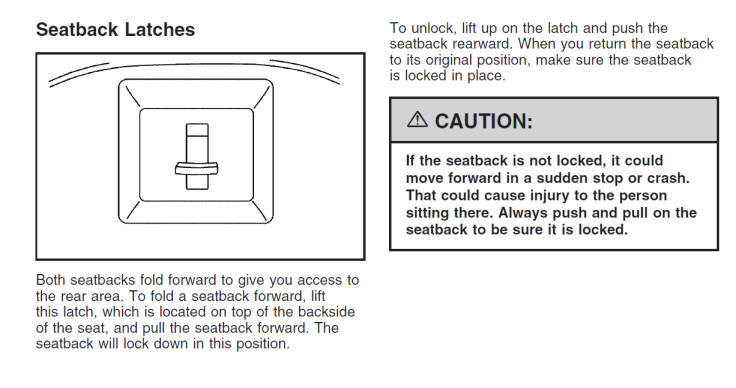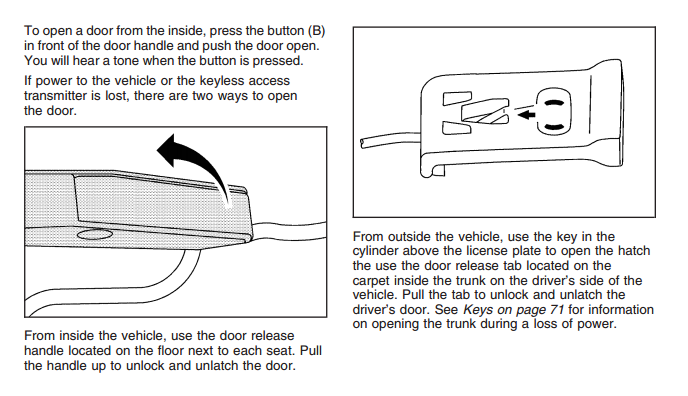Texas Man’s Death In Chevy Corvette Raises Questions About Overuse Of Electronics In Cars

James Rogers spent his dying moments last week desperately trying to get out of a vehicle that was baking in the hot Texas sun. Police believe the car's battery cable had come loose, disabling the electronics -- including the door locks. Unbeknownst to the 72-year-old Army war veteran, his escape was as simple as pulling an inconspicuous lever near the floor of his recently purchased 2007 Chevrolet Corvette.
By the time firefighters broke through the window, Rogers and his beloved Shih Tzu Leia had died of heat exhaustion in the parking lot of a Port Arthur Waffle House restaurant Rogers frequented.

Rogers apparently struggled to get out of the car. His daughter Tricia Hernandez told a local news station her father likely spent his final moments thumbing through the Corvette owner’s manual looking for emergency exit instructions. But he never reached Page 80 of the nearly 500-page book where a brief description explains how to manually open the vehicle's doors from the inside.
“With every car, we recommend owners read the owner's manual to be familiar with the features,” Monte Doran, General Motors spokesman for Corvette and Camaro, said by email.
The Corvette is one of few cars that have replaced interior door handles with electronically controlled buttons, and some safety experts say the manual levers for each door should be more clearly marked, since they represent one of the few ways drivers and passengers can escape a car in the event of a front-end collision or vehicle fire that disables battery power. This electronic button-controlled door-opening feature has been in Corvettes, including the 2015 Corvette Stingray, over numerous model years.

“The styling of the levers are not so that they stand out,” said Byron Bloch, an auto safety expert with 40 years of experience inspecting and testifying on accidents. “They're designed to blend in with the interior. They're not painted bright orange or yellow or anything like that.”
As automakers pile electronics and software into their vehicles and take a minimalist approach to user interfaces, some drivers can overlook inconspicuously placed levers blended into the interior. Manual door levers are typically located where they're expected to be, and they usually operate the same way: a lever that pulls a rod that moves a latch that releases a door. Rogers wasn't alone in being unaccustomed to Corvette's electronics-based door-opening system. For years, there have been numerous incidents of people struggling with the Corvette’s electrical doors.
Emergency Exit Levers
Knowing the location of the backup manual lever to these doors is critically important to driver and passenger safety, but the owners manual for Rogers' 2007 Corvette fails to underscore this safety-critical function.
Browse the 486-page 2007 Corvette manual, and you'll see it filled with clearly boxed in "Caution" messages next to safety-critical instructions telling owners that what they’re reading on that particular page could save their lives. Page 15 of the manual, for example, warns of the risk of not properly locking the seatback latch, while dozens of pages are devoted to warning owners that wearing seat belts and wearing them properly is important to safety.

But when it comes to instructing owners about the manual override (what is essentially an emergency-exit lever), the 2007 Corvette owner's manual devotes a short and easily overlooked instruction on Page 80 on what to do "if power to the vehicle or the keyless access transmitter is lost."

In recent years, General Motors has made changes to the way it instructs owners on the backup lever. The 2014 Corvette manual puts the instructions on page 12, with a clearer illustration, suggesting that the automaker was aware of the issue in previous manuals:

“This isn’t the same as when your radio suddenly stops working,” Bloch said. “This gentleman’s death could be attributed to GM’s lack of attention to having an appropriate design of a fail-safe mechanism inside the car and a clearly marked warning in the owner’s manual.”
Too Much Tech?
Despite all the electronic gadgetry, virtually all cars cars still use manual door levers to open doors, mainly because they would require these levers in the vehicles anyway to ensure doors can be opened from the inside if vehicle electronics fail.
Kevin Borg, an associate professor at James Madison University who specializes in automotive history, says the addition of so many electronic-control systems in modern vehicles has led to what he calls technological opacity -- that layer of software and hardware automakers are wedging between drivers and the mechanical functions of their cars.
“The design and engineering teams at GM, as well as other companies, and at engineering school, have been trying to better understand user interfaces but still need to do a better job,” Borg said. “When electronics fail, average users have little understanding of what to do, and in this case placing the mechanical backup in an odd place had a tragic, unintended consequence.”
© Copyright IBTimes 2025. All rights reserved.






















